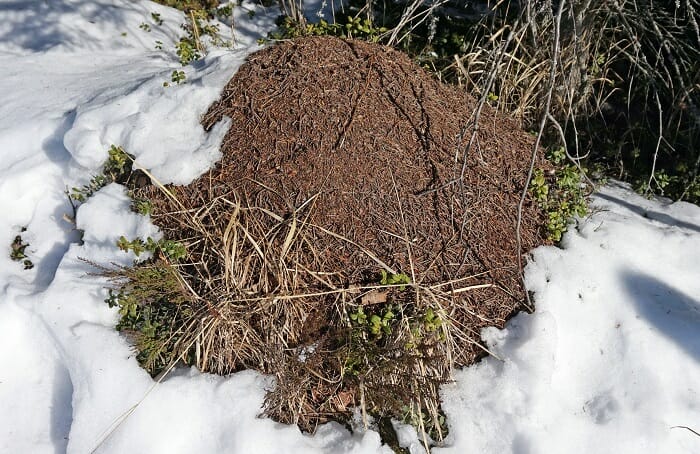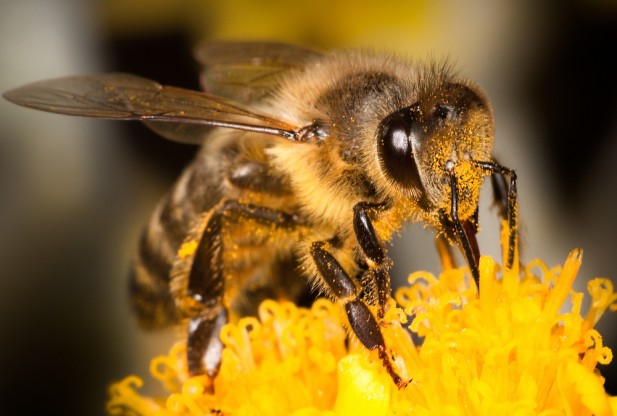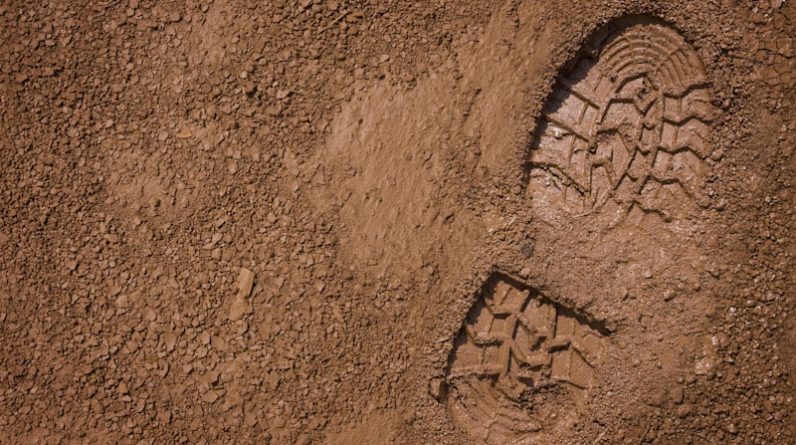It can be a struggle to maintain your compost bin or pile over the winter. Whether you’re dealing with severe cold and/or heavy snow in northerly regions, excessive moisture in the Pacific Northwest, or desert conditions in the American Southwest, your compost pile may need a little extra help during the winter months. It’s worth it, though. By the time spring rolls around, you’ll be rich in black gold.
There are two basic composting methods. With any waste material, microorganisms (aerobic bacteria) naturally work on decomposition, and you can speed that process along by doing things like maintaining the correct ratio of green to brown waste and turning the pile regularly. Vermicomposting relies on worms to eat organic matter and then cast (poop) rich soil as a byproduct. If you keep your organic waste on bare ground, your pile likely hosts both vermicomposting and composting processes.
Hot Composting
As bacteria break down waste material, they generate heat. That heat is crucial for the bacteria to keep growing, multiplying, and just generally doing their job. While most people refer to this process simply as “composting,” the more technical term is “thermophilic composting” or, more informally, “hot composting.” And “hot composting” it is: Compost piles can reach internal temperatures of 150℉!
Get The All-Natural Fertilizer That Doubles Garden Production!
Even though compost naturally generates heat, cold weather, of course, brings the temperature of the compost pile down. That affects the ability of the bacteria to do their job, particularly on the outside edges of the pile. If the temperatures dip too far — and especially if the compost isn’t tended to — microbial activity will cease completely. If you’re willing to wait for warmer spring temps for the decomposition to resume, then that’s not a big deal. But if you would prefer to keep generating compost over the winter months, there are a few ways to help your compost’s microorganisms chug along.
If You Build It
Help your compost stay toasty by enclosing it with three walls and a roof. (Leave the south-facing side uncovered, so that it can absorb warmth from the sun.) This can be as easy or as complex as you make it. Stack cinder blocks or nail together scrap lumber for the walls. For the roof, you can just balance a loose piece of lumber on top or throw a tarp over the whole thing. Even easier: Buy a compost tumbler. Enclosing compost not only helps trap its heat, but also to moderate the effects of wind and excessive moisture.
If your region experiences extreme cold, adding insulation is a good idea. Again, this does not have to be done at great cost or effort. Surround your enclosure with straw bales, line the walls with several layers of cardboard, or pile snow, straw, or leaves around it. Don’t forget to insulate the roof, as well.
Go Bigger
The bigger your compost pile is, the more bacteria it will have, and the more heat it will generate. According to the University of Illinois Extension, compost piles that are at least one cubic yard in size will weather Midwestern American winters best.
Fuel Up
Adding new waste material regularly is crucial — but you need to be careful about what kind of material you add and its size.
Maintaining the ideal proportion of green to brown waste (a.k.a. the C:N ratio) is especially important in the winter, when we want our compost piles to work at maximum efficiency. Check this site for detailed information about the C:N ratio to shoot for depending on which brown waste you add.
If you bag leaves in the fall with the intent of adding those to your compost over the winter, bring a bag inside overnight before dumping it in, so that the cold leaves don’t bring down the temperature of the pile.
It’s also a good idea to shred waste before dumping it in. Waste that’s roughly two inches in size will break down more quickly, keeping heat levels consistently high.
Not too Wet, Not too Dry
Ideally, compost should be just lightly moist. If it’s too wet, the bacteria can’t get the oxygen they need to survive. But if it’s too dry, the bacteria can’t do their job, either.
If you live in an area that experiences heavy moisture in the winter, plan your compost enclosure accordingly: a South-facing opening so that the sun can warm and dry the waste; and a roof or other covering to keep moisture out. If your compost pile unexpectedly gets too wet, stirring it up with a pitchfork should help dry things out. Additionally, adding more brown waste will help soak up excess moisture.
If you live in a desert area, keep your compost uncovered. Make a crater (or craters) in the top, to catch all the moisture you can. If worst comes to worst, you can always break out the hose.
Vermicomposting
As might be expected, vermicomposting can be problematic during cold winter months. That said, a simple workaround is to keep your vermicompost bin indoors. If the thought of a bin full of worms under your kitchen sink grosses you out (and I’ll admit I’m in that camp), the bin can be kept in an insulated garage or outbuilding, or elsewhere in your house, such as the basement or laundry room.
Depending on your location, it may be possible to keep your vermicompost box outdoors during the winter. Keep in mind that the worms will die if they get either too cold or too hot. You’ll need to experiment to find a balance of insulating the bin enough to keep it warm, but not so much that the insulation along with the heat from the hot compost process plus any heat from the sun fries your worms.
Do you keep your compost pile active all winter long? If so, share your tips and tricks in the comment section below.








![10 common plants you can turn into flour [Part I] 11 shutterstock 374664940 edited](https://modernsurvivalknowledge.com/wp-content/uploads/2024/04/shutterstock_374664940_edited-796x445.jpg)
![10 common plants you can turn into flour [Part II] 13 shutterstock 376265131 edited](https://modernsurvivalknowledge.com/wp-content/uploads/2024/04/shutterstock_376265131_edited-796x445.jpg)